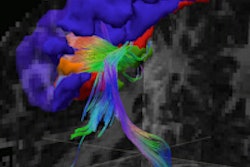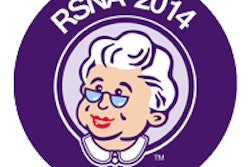Researchers in Pennsylvania have found that 70% of healthy professional and collegiate hockey players had abnormal hip and pelvis MRI scans, even though they had no symptoms of injury.
The authors say that their study, presented at the recent American Academy of Orthopaedic Surgeons (AAOS) meeting in New Orleans, could serve as a warning to surgeons that they should not rely excessively on MRI results to diagnose and plan a course of treatment or surgery for patients.
Dr. Matthew Silvis, the lead study author and medical director for primary care sports medicine at Penn State Hershey Medical Center in Hershey, said pain in the groin or hip area is the leading musculoskeletal problem for collegiate hockey players -- and the pain has a high recurrence rate among professional players.
"Guys who get hip and groin pain in hockey are repeat offenders," Silvis said. "They tend to have pain again and again, and it can be a persistent problem, affecting their performance and creating some difficulty in advancing in their careers."
Data collection
The researchers collected data from 39 hockey players during the 2008 and 2009 seasons. Twenty-one subjects came from the Hershey Bears professional hockey team in the American Hockey League and 18 players from the hockey team at Lebanon Valley College in Annville, PA. Players with past surgeries of the lower abdomen, hip, or groin were excluded from the study.
All consenting players underwent high-resolution 3-tesla MR imaging of the pelvis and hips.
Silvis, who also works professionally in sports medicine with the Hershey Bears, said one benefit of MRI is its multiplanar capability, which allows viewing from different angles in the hip and pelvis regions. The modality's high resolution also provides minute details of soft tissue, muscles, tendons, ligaments, and bone anatomy.
"The problem with the hip and groin is that there are so many different structures that can cause pain," Silvis added. "MRI can help look at all these anatomical structures in a lot of detail to determine what might be the pain generator."
Imaging results
The study found seven players (18%) with a partial avulsion of the groin and 21 players (54%) who had acetabular labral tears in the hip. Of those 21 players, 12 subjects had acetabular labral tears in both hips. Twelve players (31%) had muscle strain injuries of the hip adductors and abductors. Two players (5%) had tendinosis of the hip abductors.
Overall, 77% of players had incidental findings on MRI.
The investigators were surprised to see the prevalence of acetabular labral tears of the hip in more than half the athletes imaged, Silvis said. In addition, more than half of those players had tears in both hips.
"That is a real hot topic in sports medicine right now. The thought is, if you have a labral tear and you think it is causing symptoms, you operate to fix it. It is something that will not get better necessarily with rehabilitation," he said. "Our data show that labral tears can be symptomatic and asymptomatic in individuals. You have to be that much more careful before you decide you will operate on someone's hip or pelvis."
Across sports
While MRI is used to help determine the source of hip and groin pain in athletes in other sports, Silvis stopped short of saying the results from this study could be applied across the board.
"I think we have to be careful not to extrapolate our findings beyond what we studied," he said. "The underlying message here is, one, that MRI is a very good test, but it can also detect findings that you would consider abnormal but may not be causing clinical problems. Two, as a clinician, you need to know the limitation of the test. You don't want to treat an image; you want to treat the situation, the athlete's history, and what other exams have been done. You don't want to hang your hat just on the MRI findings themselves."
Given the results, Silvis said the question becomes whether the hip and groin issues will lead to future problems. "Did we find something on MRI scans that will lead to future problems a year from now or five years from now?" he said.
Silvis and his colleagues expect to complete the collection of data from the past two seasons this summer to identify any such trends, and plan to follow-up on the progress of the players in coming years.
By Wayne Forrest
AuntMinnie.com staff writer
March 23, 2010
Related Reading
3T MRI as good as MR arthrography for planning hip surgery, February 1, 2010
Isotropic 3T MRI aids in diagnosing labrum, rotator cuff tears, December 29, 2008
MRI keeps pace with rapidly evolving musculoskeletal systems of young athletes, May 20, 2007
The ABCs of MRI for hip disorders, February 2, 2007
MR arthrography depicts tears, instability in triangular fibrocartilage complex, January 19, 2007
Copyright © 2010 AuntMinnie.com


.fFmgij6Hin.png?auto=compress%2Cformat&fit=crop&h=100&q=70&w=100)





.fFmgij6Hin.png?auto=compress%2Cformat&fit=crop&h=167&q=70&w=250)











